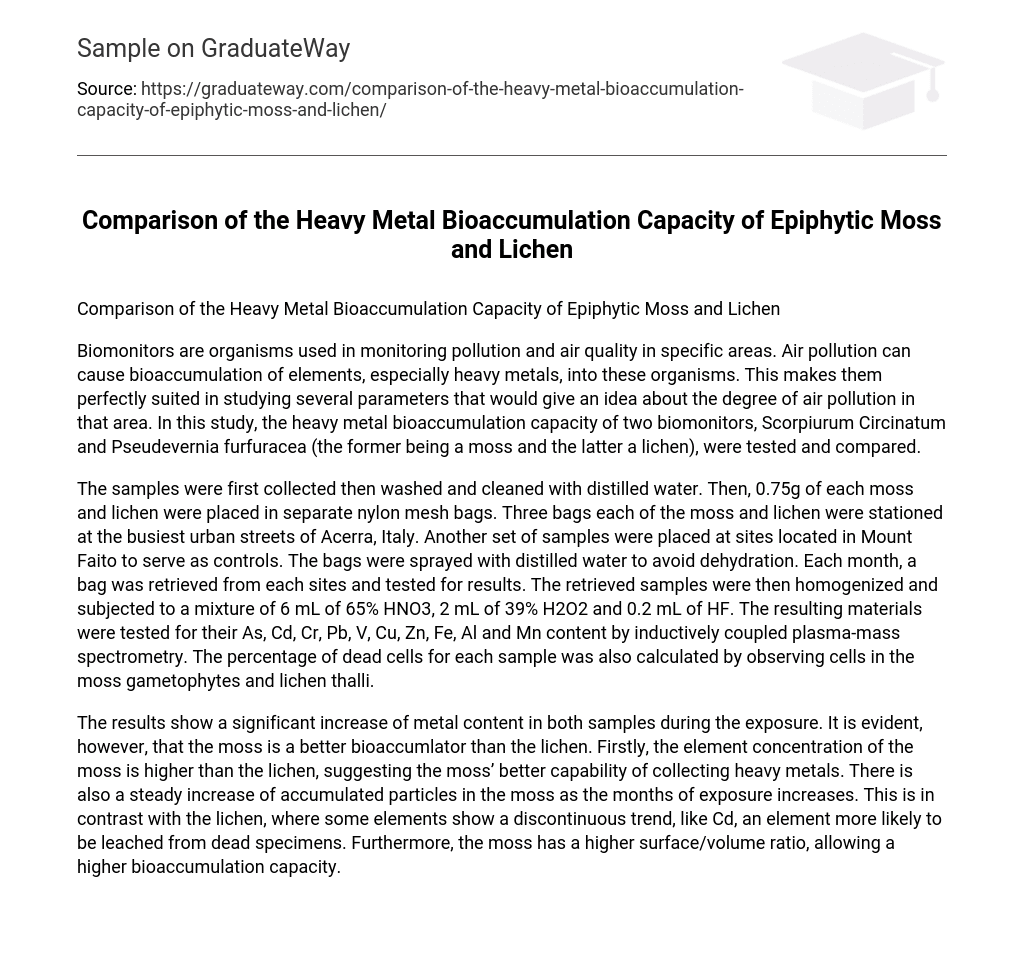Biomonitors are organisms used to monitor pollution and air quality in specific areas. Air pollution can cause the bioaccumulation of elements, especially heavy metals, into these organisms. This makes them perfectly suited for studying several parameters that would give an idea about the degree of air pollution in that area. In this study, the heavy metal bioaccumulation capacity of two biomonitors – Scorpiurum Circinatum (a moss) and Pseudevernia Furfuracea (a lichen) – was tested and compared.
The samples were first collected and then washed and cleaned with distilled water. Next, 0.75g of each moss and lichen were placed in separate nylon mesh bags. Three bags of each type were stationed at the busiest urban streets of Acerra, Italy while another set was placed at sites located in Mount Faito to serve as controls. To avoid dehydration, the bags were sprayed with distilled water. Each month, a bag was retrieved from each site for testing purposes. The retrieved samples were homogenized and subjected to a mixture of 6 mL of 65% HNO3, 2 mL of 39% H2O2 and 0.2 mL of HF before being tested for their As, Cd, Cr, Pb, V, Cu, Zn, Fe Al and Mn content by inductively coupled plasma-mass spectrometry. Additionally,the percentage of dead cells for each sample was calculated by observing cells in the moss gametophytes and lichen thalli.
The results show a significant increase in metal content in both samples during exposure. However, it is evident that the moss is a better bioaccumulator than the lichen. Firstly, the element concentration of the moss is higher than that of the lichen, suggesting that the moss has better capabilities for collecting heavy metals. Additionally, there is a steady increase in accumulated particles in the moss as exposure time increases. This contrasts with the lichen where some elements exhibit discontinuous trends, such as Cd – an element more likely to be leached from dead specimens. Furthermore, due to its higher surface/volume ratio, the moss has a greater bioaccumulation capacity.





